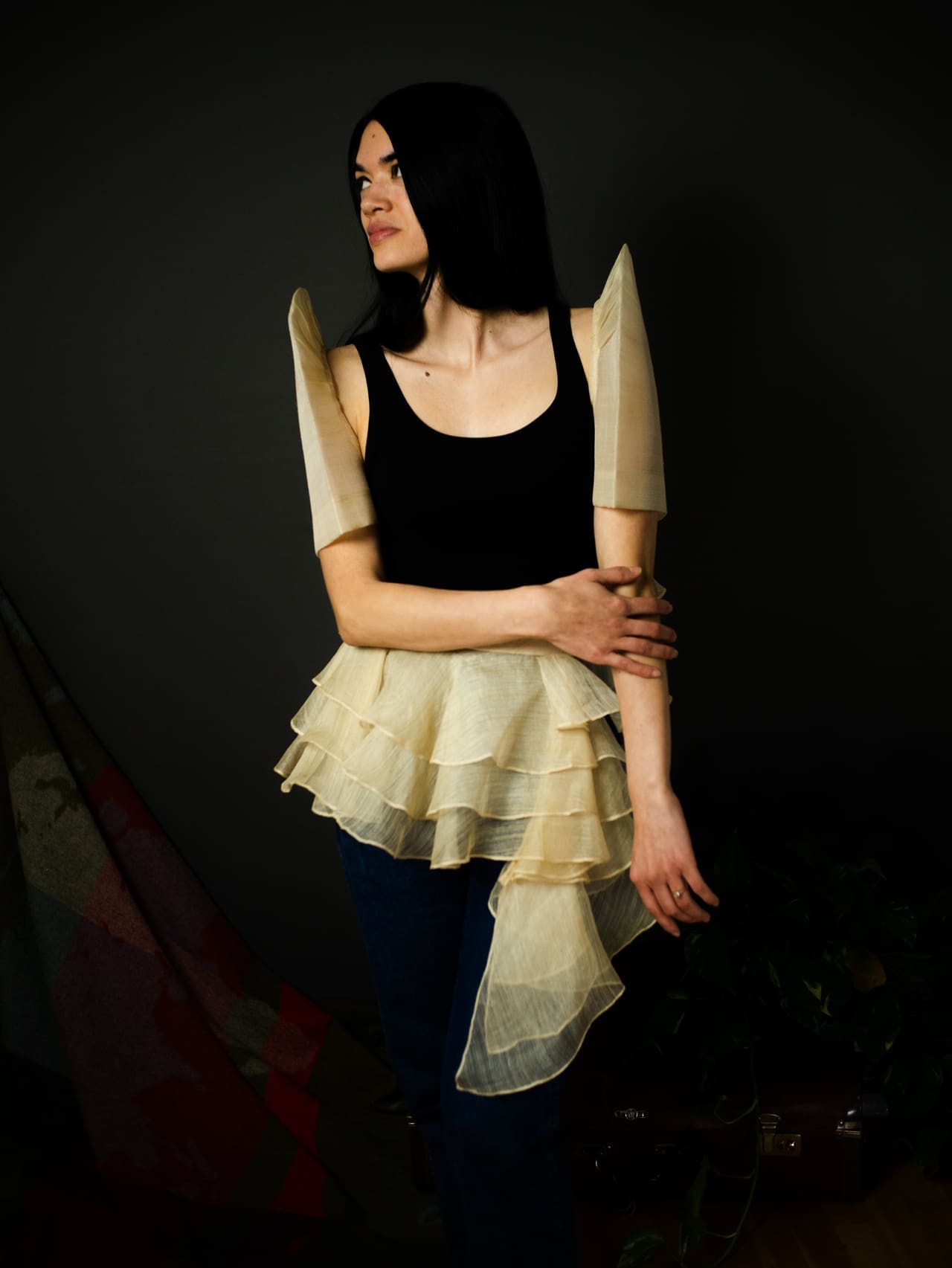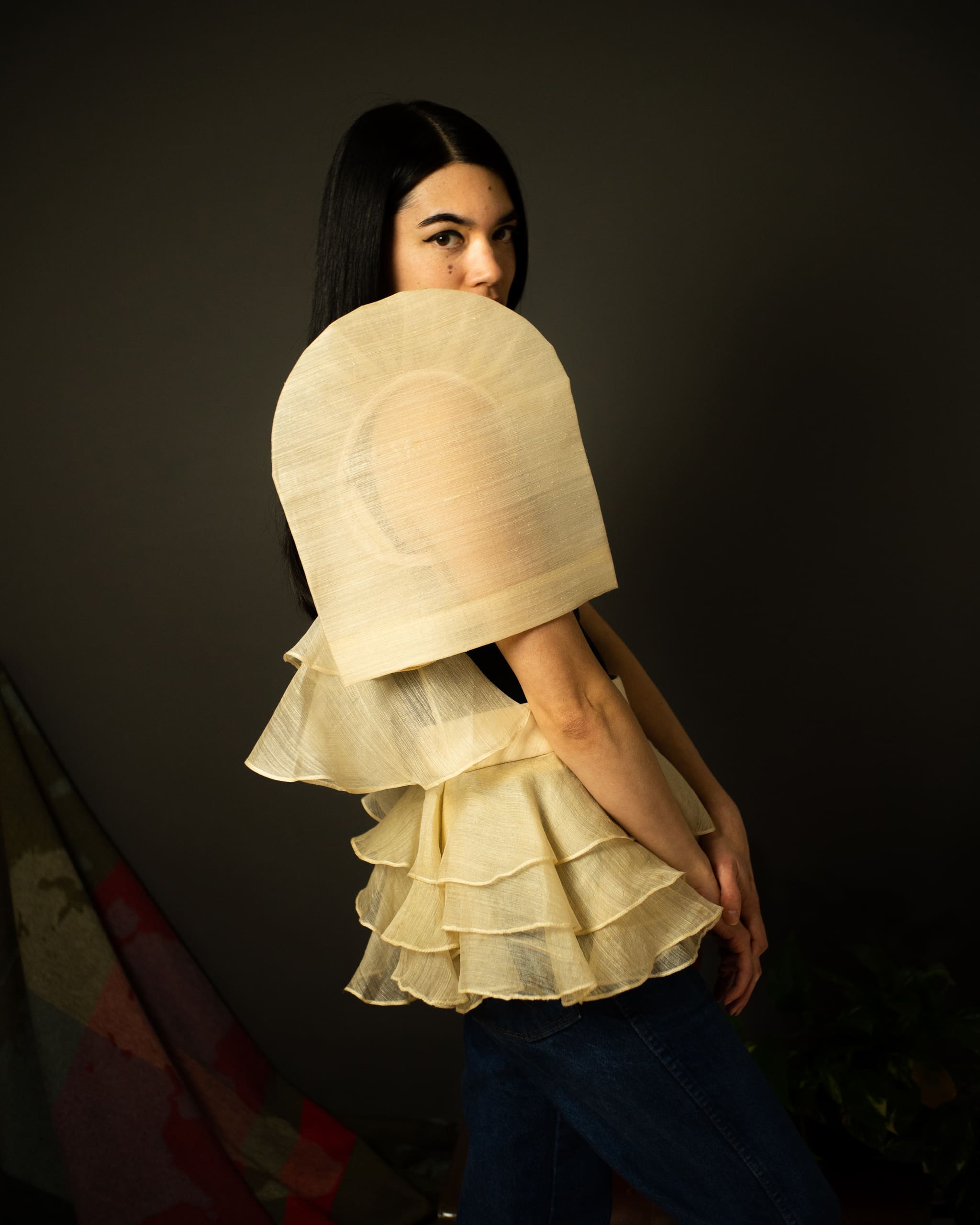Image courtesy of Mich Dulce
Designer Mich Dulce reclaims the traditional silhouette through her innovative hat-making techniques and signature terno style.

The resurgence of the terno is here. The national costume of the Philippines, it’s a timeless silhouette that has become a staple in every Filipino’s wardrobe since the 19th century when aristocrats coined it as the “Traje de Mestiza.” Since Filipino fashion designer Ramón Valera removed the panuelo, a motion that went against the grain of society’s expectations of modest women, and modernized the terno into a one-piece ensemble, it has become an ever-evolving design. The terno represents a shared identity, womanhood, and femininity, elaborated in its hand-embroidered bodice and captured in its voluminous butterfly sleeves. By encompassing a compilation of stories, told and retold from one generation to the next, this enduring symbol of heritage illuminates the present by understanding the past.
Trained in the United Kingdom, Filipino milliner Mich Dulce, brings a contemporary edge to the beloved traditional silhouette through styles that combine ethical Philippine raw materials and versatility. She references classic mid-century forms and integrates T’nalak, a traditional Filipino fabric indigenous to the T’boli tribe. Dulce highlights the importance of creating pieces that can be easily assimilated into everyday wear—garments for the modern Filipino not “limited to one look” and “can be dressed up and dressed down.” She further explains, “The easier you make it to wear and the more versatile you can make it, the more it will live on because it can be reinterpreted.” In her renowned Assemblage collections, the 41-year-old designer creates modular sets of clothing pieces that can be worn individually or layered together to create distinct looks—particularly casual ones.
Dulce credits this embrace of the terno as casual garment to Ternocon, the annual competition of local designers dedicated to the traditional Filipiniana attire. “Ternocon was the significant turning point in modern Filipino fashion. Suddenly, it was in everyone’s mind that it was not just a costume,” Dulce remarks, adding that the local competition was “significant in bringing that back into the people’s presence.”
Dulce’s Assemblage 001 collection included a black “terno harness,” a piece individuals can tie at the waist featuring the iconic butterfly Filipiniana sleeves in soft tulle. “My signature look would be the way I make my sleeve. It’s sheer and stands well because I employ hat-making techniques. That’s why it looks different. They’re [also] versatile and can be worn with everything.” Dulce also accented the harness with an oversized bow on the back and an asymmetrical ruffle detail with piña paired with duchess satin. Dulce says, “The assemblage [styles] are always supposed to [be] mixed with your wardrobe and are flexible.”

Meanwhile, the Terno Ruffle Bolero, a signature style in Dulce’s Assemblage 002, demonstrates the adaptability of the traditional design by utilizing butterfly sleeves and a ruffled back detail on the classic bolero. Here, the terno becomes an accessory—one that can be worn everyday. By making the terno’s elements adaptable, she assimilates the enduring design into contemporary society. She explains, “I think it’s [all about] the ability of making it [and] putting it back into regular dress. What does it mean to me? It’s a significant part of my culture, but it’s also something that I can bring with me every time I go [somewhere]. ”
“Traditionally, when you think about the terno even pre-Imelda [Marcos], you hide behind the sleeve. It’s a really big mark of being a Filipino woman. It’s a shy, feminine kind of look,” Dulce explains. “Now, there’s a resurgence [bringing] out how a terno can be a strong look for every woman. It’s reclaimed by all of us. It’s the nation’s sleeve.” Foreign designers are also inspired by the style, propelling it in the global arena. Once, designer Edward Crutchley asked Dulce how to incorporate the the terno in his personal collection. “[It’s] a great turning point when you see an international community recognize a silhouette and bring it into their own collection,” she says.
Dulce’s love for the terno is the same as her unconditional love for hats. Instead of seeing the two as costumes worn for specific occasions, she believes they’re silhouettes that can be tailored to everyday wear in each and every individual’s wardrobe. “When I make it clothes, I’m veering towards using the terno as a silhouette because it’s a really blatant way to show your culture,” she says, adding it’s a “distinctive piece of clothing” that reflects our heritage, our history, and our identity. She remarks, “I would love to see people interjecting it with their outfits on a day-to-day basis. Here’s hoping more people embrace wearing their culture on their sleeves.”

